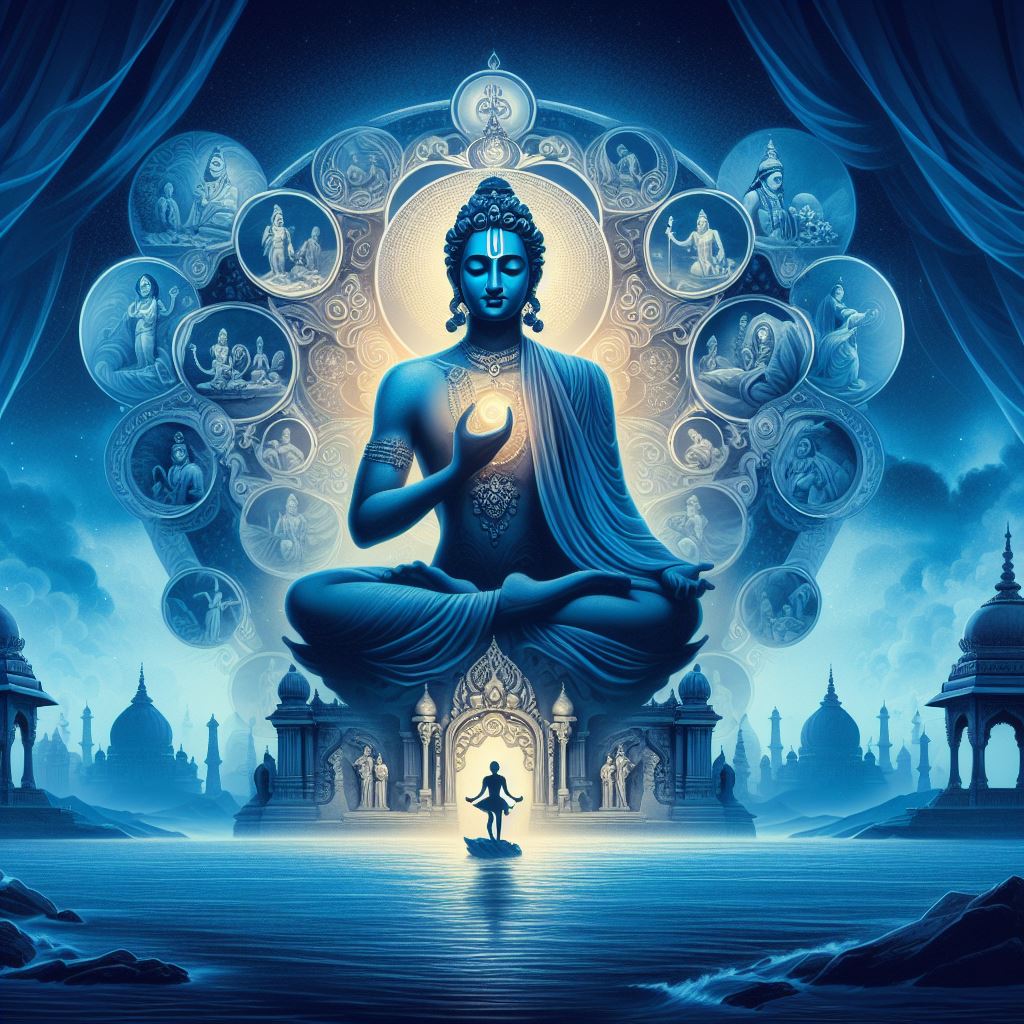Bhagavad Gita : Understanding Chapter 18
The Bhagavad Gita, a cornerstone of Hindu philosophy, offers a transformative guide to self-realization. Chapter 18, titled Moksha-Sannyasa Yoga (The Yoga of Liberation and Renunciation), serves as the grand finale, culminating the profound teachings imparted by Krishna to Arjuna.
Arjuna’s Lingering Doubts: Beyond the Battlefield
Though equipped with profound knowledge on Karma Yoga (action), Jnana Yoga (knowledge), and Bhakti Yoga (devotion), Arjuna grapples with lingering doubts. He seeks clarity on the true meaning of renunciation (Sannyasa) and liberation (Moksha).
Krishna’s Revelation: The Spectrum of Action and Renunciation
Krishna dispels the confusion by clarifying the distinction between renunciation of action (Karma-Sannyasa) and renunciation of attachment to the fruits of action (Phala-Tyaga). He emphasizes that true liberation lies not in abandoning action itself, but in performing it with detachment and dedication to the Divine.
Key Concepts of Moksha-Sannyasa Yoga in Chapter 18:
- Karma-Sannyasa vs. Phala-Tyaga: Krishna differentiates between renouncing action (Karma-Sannyasa), which is impractical, and renouncing attachment to the fruits of action (Phala-Tyaga). The latter leads to inner peace and liberation.
- The Fivefold Classification of Action: Krishna presents five categories of action: Sattvic (good deeds done selflessly), Rajasic (actions driven by desire), Tamasic (actions done with ignorance), Nitya-Naimittika Karma (obligatory duties), and Lok-Sangrah Karma (actions for social welfare). Performing actions based on your nature (Guna) and without attachment is key.
- The Gunas and Liberation: Krishna explains how the Gunas (qualities) influence our actions and bind us to the cycle of Karma. Liberation requires transcending the Gunas and acting with equanimity.
- The Path to Devotion: Chapter 18 emphasizes the importance of Bhakti Yoga (devotion) as the ultimate path to liberation. Surrendering to the Divine with love and devotion allows us to transcend the limitations of the self and attain liberation.
Moksha-Sannyasa Yoga for Modern Life:
The wisdom of Moksha-Sannyasa Yoga transcends the battlefield of Kurukshetra and offers valuable insights for navigating the complexities of modern life:
- Detachment and Action: Strive to perform your duties and responsibilities with a sense of detachment from the outcome. Focus on the action itself, not the rewards.
- Understanding Your Nature: Recognize your dominant Guna (quality) and choose actions aligned with it. Don’t force yourself to act in ways that go against your nature.
- Transcending Desires: Cultivate inner peace by letting go of desires and attachments. Focus on fulfilling your purpose without clinging to outcomes.
- The Power of Devotion: Develop a devotional attitude, whatever your chosen path may be. Find inspiration and guidance in a higher power that helps you overcome challenges and find inner peace.
Exploring Moksha-Sannyasa Yoga Further:
This blog post offers a glimpse into the transformative wisdom of Moksha-Sannyasa Yoga as revealed in Bhagavad Gita Chapter 18. To delve deeper, consider these options:
- Spiritual Teachers and Texts: Seek guidance from spiritual teachers or study classical Yoga texts to deepen your understanding of Karma.

